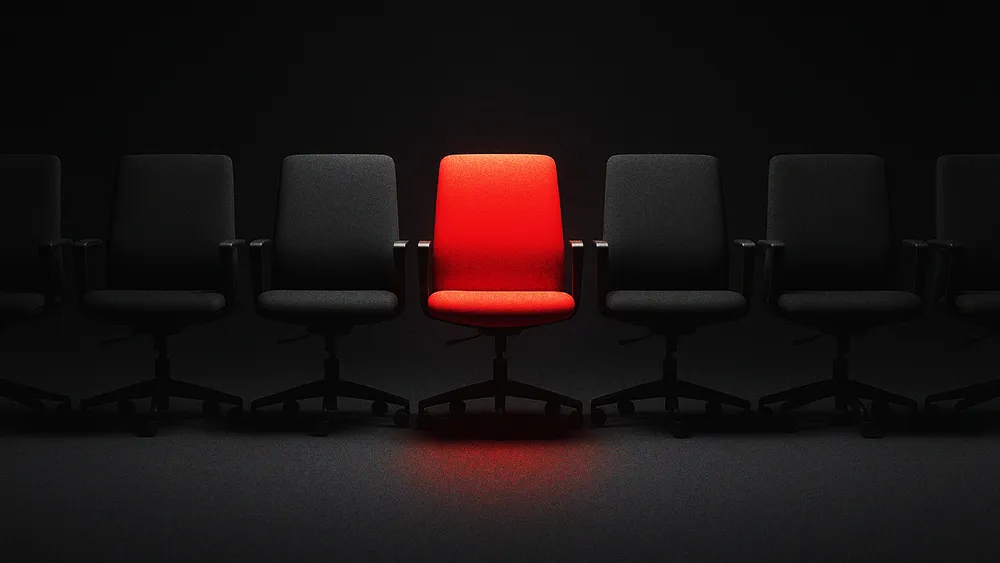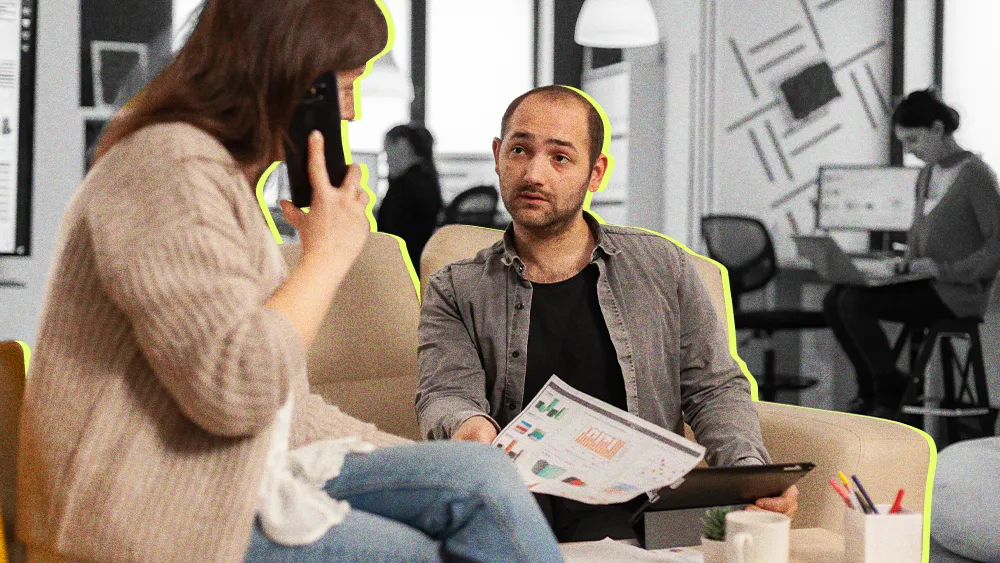Psych Safety Leader Debunks 9-9-6 Myths, Calls for Culture of Trust and Flexibility

Key Points
As the 9-9-6 work model spreads, falsely promising high performance, it is actually a dangerous form of exploitation that undermines productivity and human well-being.
Jade Garratt, an expert in psychological safety, explains why the 9-9-6 model is a moral failure and a flawed business strategy that leads to burnout and homogenous teams.
To build genuinely high-performing teams, leaders must model healthy boundaries, clearly communicate expectations, and foster trust and flexibility.
Sustaining that kind of level of intensity will always come at a cost to your physical and mental health, to our relationships, to our creativity, and to our lives. I don't believe any price should ever be appropriate for selling that much of our lives to a business.

Jade Garratt
Co-Founder and Director of Education
Psychological Safety
A demanding work model known as ‘9-9-6’ is spreading from the tech fringe to the business mainstream. Originating in China’s tech scene, the schedule—working 9 a.m. to 9 p.m., six days a week—is being adopted by some AI startups as a competitive edge. But don’t mistake this for just another flavor of hustle culture. It’s a calculated push to normalize a 72-hour work week as a permanent, take-it-or-leave-it operational standard.
For Jade Garratt, an educator and researcher specializing in psychological safety and inclusion, no job should require the sacrifice of an individual’s well-being. As the Co-Founder and Director of Education at Psychological Safety, powered by Iterum Ltd, and with a background that includes senior leadership roles at the University of Nottingham, Garratt believes the conversation around 9-9-6 is a moral question about the value we place on life outside of a job.
“Sustaining that kind of level of intensity will always come at a cost to your physical and mental health, to our relationships, to our creativity, and to our lives,” she says. “I don’t believe any price should ever be appropriate for selling that much of our lives to a business.” But the problem isn’t just ethical. It’s also a symptom of failed business strategy.
High cost, not performance: Garratt challenges the very idea that such extreme hours lead to high performance. “The cost of losing someone from an organization and training their replacement is huge, and significantly slower than working in a more sustainable way,” she notes. “A workplace can’t be high-performing if it routinely burns people out.”
The exhausted surgeon: Her analogy makes the risk visceral. “You want the highest-performing medical team if you need to have surgery. You do not want that surgical team to have been working 9-9-6. We know that people are not at their best. They are not making their best decisions or doing their best-quality work when they are working in this way.” The point is that quality work and sound judgment are fundamentally compromised by exhaustion, which is why there are strict work-hour limits for medical professionals. The same logic should apply to other types of workers.
Garratt explains the model is also inherently exclusionary. It risks creating a homogenous workforce by filtering out anyone with commitments outside of their job. For any organization that wants to scale, she contends, homogeneity is actually a critical weakness. “A 9-9-6 schedule assumes that everyone can devote the same hours, which they can’t. If I’m working nine to nine, who’s putting my toddler to bed? It means we are only tapping into a very narrow band of people to work in our teams,” she observes.
That systematic exclusion, she says, leaves a very specific type of person. “We are only going to get this very, very narrow band of people who are likely very early career without other family commitments, are probably from a highly privileged group who have someone else able to manage all the other aspects of their life so that they can work these outrageous hours.”
Humans, not machines: As technology advances, Garratt suggests the 9-9-6 model becomes even more counter-productive. In an age where AI can handle rote tasks, the true value of human workers becomes their unique capabilities. But those skills are undermined by a culture of exhaustion. “We are humans who have relationships with each other,” she explains. “We need to take time to build these relationships and work in ways that help each other feel safe to share ideas, ask questions, and admit mistakes. None of this is easy if we are exhausted, and if we are doing it at the expense of our personal relationships.”
Restoring that human element requires a disciplined and consistent approach to leadership, creating a culture where rest is safe and encouraged. She recommends three foundational actions:
Leaders go first: The first step is modeling. “If leaders are not modeling the behaviors we want people to feel safe doing,” Garratt says, “we won’t create spaces where others feel able to do them.” In practice, if leaders don’t visibly take time off, employees often struggle to believe it’s truly acceptable.
No fine print: Her second step is to reduce ambiguity. She challenges leaders who assume rules are common knowledge: “How do employees know what is acceptable if they haven’t been explicitly told? So much of the anxiety and fear comes when we don’t know where the line is. It’s generally people lower in the power structure who feel most vulnerable, so we need to be doubly explicit about what is okay,” she outlines.
Life happens: Finally, leaders must build a foundation of trust and flexibility, empowering employees to manage their own time. A trust-based culture allows life and work to coexist, so employees can handle the school run or an appointment alongside work. That kind of culture fosters the genuine commitment that 9-9-6 destroys, as shown by successful four-day week trials.
Finally, Garratt challenges the most romantic myth of overwork. She dismisses the idea that shared suffering builds purpose as just another story deployed to legitimize an unhealthy and unproductive way of working. “I saw a piece that talked about 9-9-6 as a way to cultivate greater shared purpose, and I want to challenge that idea,” she concludes. “You don’t need to work a 72-hour week to find purpose. We can feel a sense of connection and collaboration with each other without working in these ways.”
Related articles
TL;DR
As the 9-9-6 work model spreads, falsely promising high performance, it is actually a dangerous form of exploitation that undermines productivity and human well-being.
Jade Garratt, an expert in psychological safety, explains why the 9-9-6 model is a moral failure and a flawed business strategy that leads to burnout and homogenous teams.
To build genuinely high-performing teams, leaders must model healthy boundaries, clearly communicate expectations, and foster trust and flexibility.

Jade Garratt
Psychological Safety
Co-Founder and Director of Education

Co-Founder and Director of Education
A demanding work model known as ‘9-9-6’ is spreading from the tech fringe to the business mainstream. Originating in China’s tech scene, the schedule—working 9 a.m. to 9 p.m., six days a week—is being adopted by some AI startups as a competitive edge. But don’t mistake this for just another flavor of hustle culture. It’s a calculated push to normalize a 72-hour work week as a permanent, take-it-or-leave-it operational standard.
For Jade Garratt, an educator and researcher specializing in psychological safety and inclusion, no job should require the sacrifice of an individual’s well-being. As the Co-Founder and Director of Education at Psychological Safety, powered by Iterum Ltd, and with a background that includes senior leadership roles at the University of Nottingham, Garratt believes the conversation around 9-9-6 is a moral question about the value we place on life outside of a job.
“Sustaining that kind of level of intensity will always come at a cost to your physical and mental health, to our relationships, to our creativity, and to our lives,” she says. “I don’t believe any price should ever be appropriate for selling that much of our lives to a business.” But the problem isn’t just ethical. It’s also a symptom of failed business strategy.
High cost, not performance: Garratt challenges the very idea that such extreme hours lead to high performance. “The cost of losing someone from an organization and training their replacement is huge, and significantly slower than working in a more sustainable way,” she notes. “A workplace can’t be high-performing if it routinely burns people out.”
The exhausted surgeon: Her analogy makes the risk visceral. “You want the highest-performing medical team if you need to have surgery. You do not want that surgical team to have been working 9-9-6. We know that people are not at their best. They are not making their best decisions or doing their best-quality work when they are working in this way.” The point is that quality work and sound judgment are fundamentally compromised by exhaustion, which is why there are strict work-hour limits for medical professionals. The same logic should apply to other types of workers.
Garratt explains the model is also inherently exclusionary. It risks creating a homogenous workforce by filtering out anyone with commitments outside of their job. For any organization that wants to scale, she contends, homogeneity is actually a critical weakness. “A 9-9-6 schedule assumes that everyone can devote the same hours, which they can’t. If I’m working nine to nine, who’s putting my toddler to bed? It means we are only tapping into a very narrow band of people to work in our teams,” she observes.
That systematic exclusion, she says, leaves a very specific type of person. “We are only going to get this very, very narrow band of people who are likely very early career without other family commitments, are probably from a highly privileged group who have someone else able to manage all the other aspects of their life so that they can work these outrageous hours.”
Humans, not machines: As technology advances, Garratt suggests the 9-9-6 model becomes even more counter-productive. In an age where AI can handle rote tasks, the true value of human workers becomes their unique capabilities. But those skills are undermined by a culture of exhaustion. “We are humans who have relationships with each other,” she explains. “We need to take time to build these relationships and work in ways that help each other feel safe to share ideas, ask questions, and admit mistakes. None of this is easy if we are exhausted, and if we are doing it at the expense of our personal relationships.”
Restoring that human element requires a disciplined and consistent approach to leadership, creating a culture where rest is safe and encouraged. She recommends three foundational actions:
Leaders go first: The first step is modeling. “If leaders are not modeling the behaviors we want people to feel safe doing,” Garratt says, “we won’t create spaces where others feel able to do them.” In practice, if leaders don’t visibly take time off, employees often struggle to believe it’s truly acceptable.
No fine print: Her second step is to reduce ambiguity. She challenges leaders who assume rules are common knowledge: “How do employees know what is acceptable if they haven’t been explicitly told? So much of the anxiety and fear comes when we don’t know where the line is. It’s generally people lower in the power structure who feel most vulnerable, so we need to be doubly explicit about what is okay,” she outlines.
Life happens: Finally, leaders must build a foundation of trust and flexibility, empowering employees to manage their own time. A trust-based culture allows life and work to coexist, so employees can handle the school run or an appointment alongside work. That kind of culture fosters the genuine commitment that 9-9-6 destroys, as shown by successful four-day week trials.
Finally, Garratt challenges the most romantic myth of overwork. She dismisses the idea that shared suffering builds purpose as just another story deployed to legitimize an unhealthy and unproductive way of working. “I saw a piece that talked about 9-9-6 as a way to cultivate greater shared purpose, and I want to challenge that idea,” she concludes. “You don’t need to work a 72-hour week to find purpose. We can feel a sense of connection and collaboration with each other without working in these ways.”




